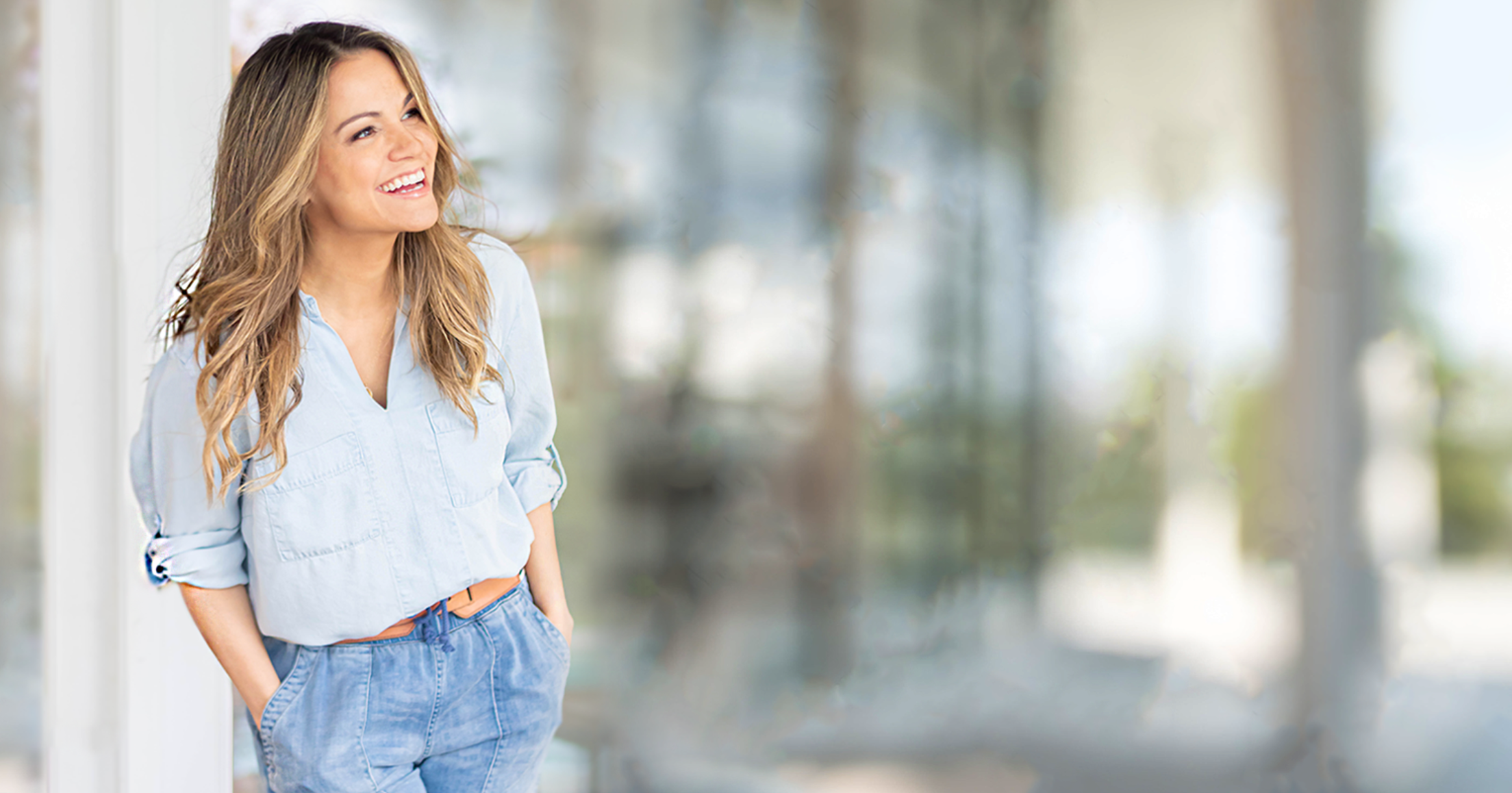The 50 States Project is a yearlong series of candid conversations with interior designers we admire, state by state. Today, we’re chatting with Brazilian-born, Las Vegas–based Fabiola Avelino, who explains why she has an eight-page contract, why she delegates everything but the design itself, and how she helps clients understand value.
When did you know you were meant to be a designer?
I know the exact day. I was 12 years old in my mom’s friend’s house. She had a hardcover book about Frank Lloyd Wright’s Fallingwater, and I went through all of his architecture and I knew I had to be in the design world. In Brazil, there was no such thing as interior design school—you were either a decorator, an architect or an engineer—so I ended up going to school for architecture, but my passion was always interiors. The engineering aspect of urbanism and all the precise calculations architects have to deal with on a daily basis—that is not what I love! I love what the eyes can see and the skin can feel.
When did you make that transition into interiors and decorating?
I came to the United States to visit in 2001 and ended up staying. The hot look then was faux finish, very Tuscan. My mom had a store in Brazil and used to do antiques restoration; she was very artistic and would paint [finishes and murals] on the walls. So when I got here, I started painting murals in my own house, and then some of my friends started asking me to do it in their houses, too.
When I finished the mural or faux finish, I’d take a look at my clients’ furniture and say, “You need a better sofa here, a wow-factor chair there—and how about a stellar floor lamp, too?” That’s when they started asking me to do the entire room, and with time, the entire house.
Looking at your portfolio, it’s not that Tuscan look at all. How did you grow and change?
Vegas is an ever-evolving city, and one of the fastest-growing cities in the U.S. We have a lot going on here—people have discovered that Vegas is not just about gambling; it’s also about the nice restaurants, clubs, spas and golfing. It’s very luxurious adult entertainment. And with all the capital that has been invested in the city, we have a lot of new residents coming to town, as well as “out-of-towners” [choosing] Vegas as their second or third home. There are a lot of investors and [entrepreneurs] from all over the world.
Vegas is a very colorful city, so homeowners here are not scared to allow their colors to shine. Every hotel, every casino, every corner of the city is different. I say to all of my clients, “Let’s try not to look to trends, let’s look at what’s inside you.” Trends fade fast—and [that way] we don’t go back to that Tuscan mistake.
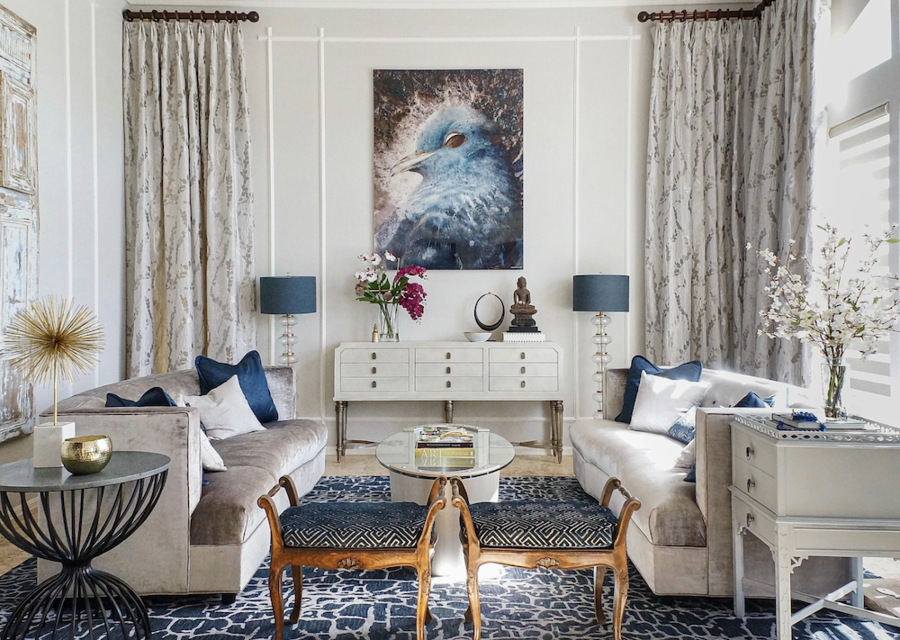
What does that rapid growth look like?
The architecture of Vegas is actually extremely contemporary. When you look at the mountains, [the skyline] looks like the future: There’s not a lot of greenery, and the houses are sharp with beautiful contemporary lines. It’s unique, something that a lot of people don’t expect from Vegas.
Are most of your clients designing vacation homes, or are you designing a lot of primary homes as well?
I would say 25 percent of my clientele is from out of town; the others are locals. Most of my clients purchase very large homes and don’t want to bring any of the furniture they had [with them]. When I ask about what pieces I should be [prepared] to design around, they say, “I’m only bringing myself and a toothbrush!”
They need everything!
As designers, we always love the installation day, right? But I can’t really do that with some of my projects—sometimes I have to knock out some main pieces and then layer as it goes, because they don’t want to wait six months for their sofas and beds. At the same time, I won’t sacrifice style for time. Sometimes we’ll just fluff the bed to make it pretty and then put the mattress on the metal frame so it’s not on the floor while we wait.
How big are the projects you’re working on?
A lot of them are about 5,000 square feet. My latest project, which I’m still working on, is 14,000 square feet. That one’s going to take a while—the clients are very selective, and they’re not in a rush. Some projects go fast, and others seem like it’s a forever relationship. I have clients that say, “Sometimes I don’t even open your emails, because I don’t want to go that fast.” Of course, speed is key when managing a design firm, too. It depends on the client.
You mentioned that for some projects, you have to get those big pieces in fast. How does that change where you shop?
A lot of the pieces I use are custom. Because they want it fast, my clients get a little impatient, but it makes such a difference to create. By creating a stamp of your vision, you [achieve something] out of the ordinary. When I need something a little faster, I will get it made in town. I have good relationships with my fabricators, so they can sometimes put me a little bit higher in the queue and we can knock some of my pieces out fast. For other things, like rugs, we have to wait.

How do you talk about custom with your clients to help them understand your vision?
I create value, first of all, by educating my clients on what’s out there and the price they would pay if they were to buy it at retail. It’s like saying you can either go to a shop and buy a dress, or you can go to a tailor and have something custom-made to fit you perfectly.
When do you talk about budget with a client?
It’s the very first call—I don’t want that elephant in the room. If they don’t know what it is, I use my past projects to say, “This room probably costs between this and that.” I give them the general idea, and then I go from “good” to “better” to “best.” Which one do they want? How do they want to feel? What level of “wow” factor do they want? And then I look at the square footage or the value of the home. In Vegas, the common formula is to invest between 20 and 35 percent of the home’s value in its interiors.
On my proposal, I do a breakdown of what a room would cost and where that money would go—a base price of things for good, better or best—and that usually gives them a pretty good idea. Some of my clients ask for me to be at X budget and not go a penny beyond, so I don’t even ever show them the best; I stay right in between the good and the better to stay on the safe side. For others, I’ll ask them if I can show them something amazing that’s a little out of budget, and most of the time they say yes.
No one wants to not see!
I mean, no one likes to hear, for example, “It’s going to be $500,000.” They fall off their horse [at that] if they’ve never worked with a designer before. That’s when I say, “Would it be OK for us to have a budget to guide us, but throughout the journey I show you some pieces to better serve you with the designs?” Sometimes we do go a little bit over budget and they are more than happy that we did. At the end, they say, “If you would have told me that this is what it would cost in the beginning, I wouldn’t have understood.”
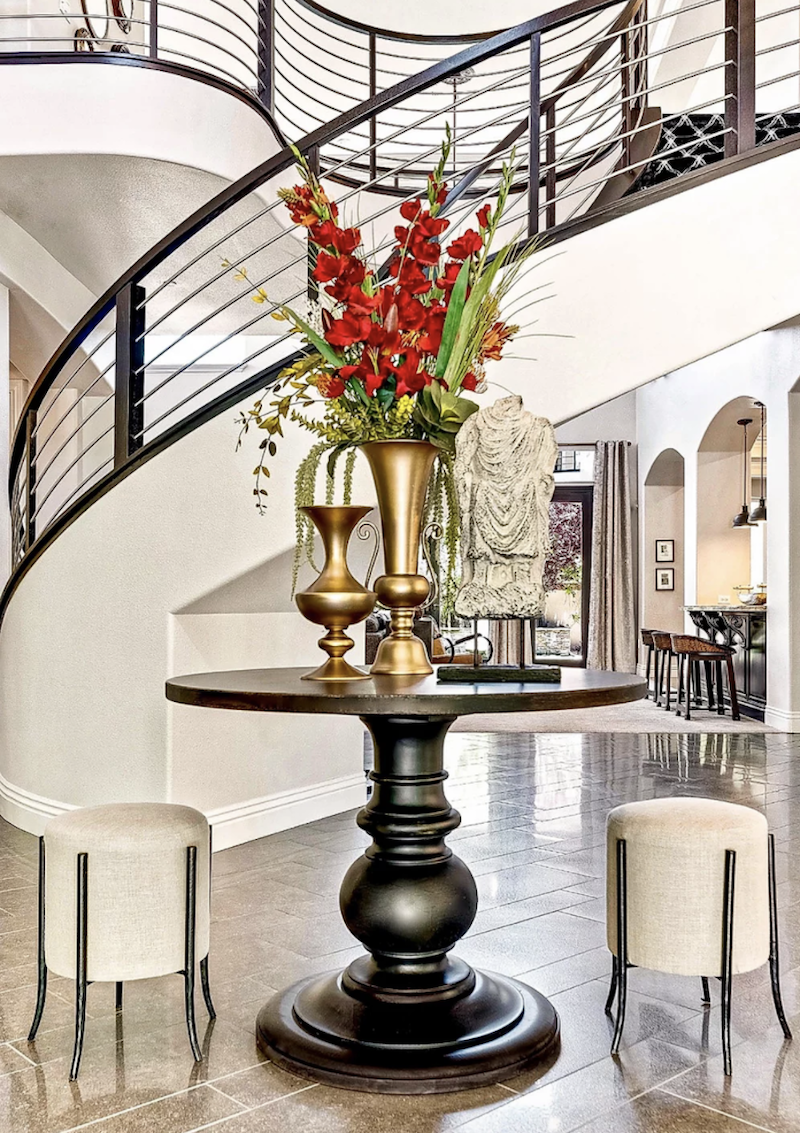
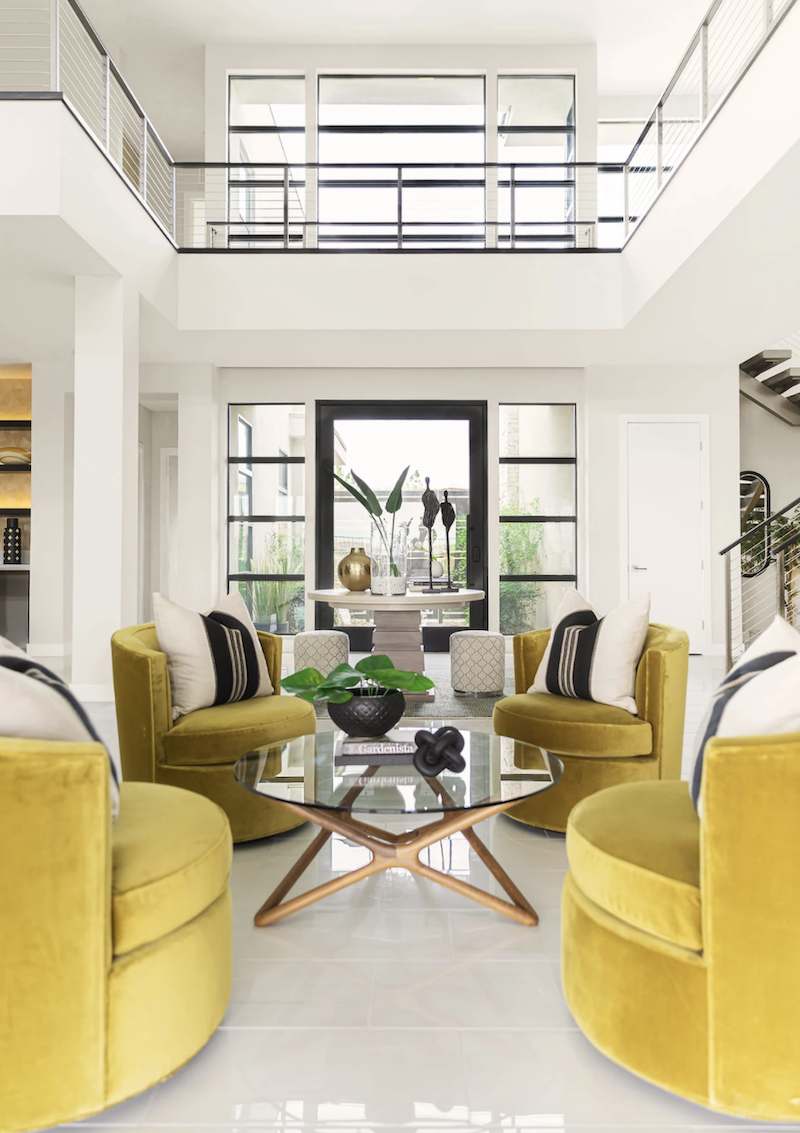
I love that you said you create value. How do you talk about your fees when you’re talking about the overall budget?
I create the proposal after we talk about where the budget goes. It has a few pages—one is inspiration; another one is an example of one room and what that would cost, just as an educational piece; and the next page is the overview of project finances.
What I do is this: For easy math, say that the budget for the entire house is $100,000. If they were to buy retail and do it all their own, the cost would be $100,000 plus their time. I explain that buying with me saves 25 percent, so it’s $75,000; my fee would be a quote for $20,000. So with my services and my prices, they’re still saving money. Having a designer is a win-win for the client, because they have better prices, it’s done better than they could have done it on their own, and they have all that service. I’ve never had a “no” because of prices. I have never had a client say, “You are too expensive,” because the value is right there.
How do you quantify your prices for the client?
I explain that I purchase through different relationships I have with wholesalers and buying groups, so their cost is always below retail—and if the piece is custom, we try to value those items below what something made to that level would be at retail.
Do clients want to see all the receipts?
I work with closed books, so their receipt is the one they get from my company. I [took one project with open books] and I wish I hadn’t. It’s not that I don’t want to be upfront; it’s because if a client needs to [examine bills that closely], they’re not looking at the service—they’re trying to find a way to always get the best deal. But I’m not a discount store, you know? I am a luxury firm, and I’m going to provide you with great service and a great value on all of it.
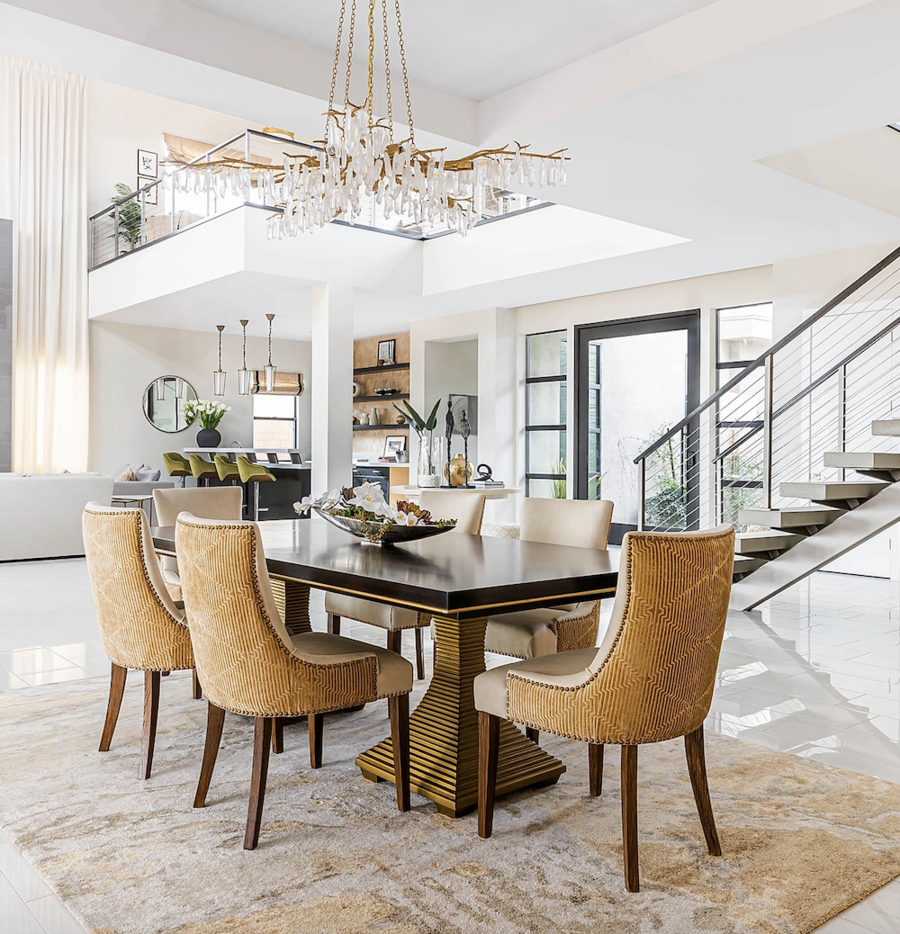
What does your presentation look like for clients?
It’s mostly virtual, and I use Apple’s Keynote for my presentations. It’s just so fast and easy to work with. [Because of COVID], I’m starting to do virtual presentations as well. It saves so much travel time, which I love.
How do you walk them through what your vision is?
I use digital and physical mood boards. I’m a visual person and so are my clients. I used to put a lot of time into writing beautiful, detailed descriptions of the presentations, but I found that they were not reading them. It’s so funny, because sometimes I ask, “A or B?” They say, “Yes.” I say, “You weren’t reading!” So I try to make it as visual as possible.
What does your team look like?
My marketing person helps me with my website, social media, photography, copywriting. My administrative manager does all the purchases, calls all the vendors, makes sure deliveries are on the schedule. And my design manager is my right arm. She comes to me with important things and keeps track of our workflow, and once I put the designs on a board—including the fabrics and tiles and wallpaper I want to use, even if it’s out of stock or on back-order—she updates it. She shows it to me and says, “This is what’s available, this changes the price a little bit.” And I say yay or nay, because I’m very careful with the budget, more than everybody else. Once I approve it, it’s ready to present to the client.
How did you make your first hire, and how did the structure of the firm change over time?
I officially started my full-time design firm in 2010, but I have been doing design since 2001. At first, it was just me doing all of it, working 15 hours a day. I loved it, from the purchasing to making the phone calls. But I was exhausted and it felt like I didn’t have a life—although, I must say, I loved it. But hiring an administrative assistant made a big, big difference.
That’s an amazing thing to hand off.
Yeah. In the beginning, I also hired some junior designers, and felt like I was constantly trying to teach them how to design, thinking that’s what I should be doing. But no, I’m supposed to be the designer. People come to me for my brand.
With time, the goal is to get my team to where they start understanding your sources and inspiration. My manager is also starting to really grasp my visions and is surprising me slowly with some designs that I love as well, so that’s the idea. The way I want to grow is to continue to teach my team my style so then when they source for me, which is very time-consuming, I can pick from what they found based on my vision. But I’m definitely very motherly and protective of the designs, and they have to feel like they are mine. I’m not ready to hand that to anyone just yet.

You hired someone to do ordering and bookkeeping first. What came next?
I had a couple of junior interior designers come and go. After that, I had an amazing, experienced senior designer who came out of retirement to work with me. She was like, “I don’t want to have a firm anymore, I just want to design for fun.” But then with COVID, because she and her husband are older, they decided to stay home. And I was sad, but that was at the same time that I brought on my firm manager to help me with branding. Now that I have her, I’ll be able to refocus on social media—I’ve always been so busy with my projects, but I told myself, “Fabi, it’s time to stop being ‘too busy with projects’ and become more productive with different facets of your firm.”
That’s great. What kind of changes have you made so far?
I started to photograph my projects better than before, and I started using [my portrait to represent] my brand. For the longest time, my face wasn’t anywhere to be found online—it was always about my designs. So I said, Fine, I’ll do a photo shoot, you know? And actually start being a brand, like Kelly Wearstler or Nate Berkus. They are the brand. We recognize their faces from 10 miles away! So that’s an exciting new area for me, and it seems a little scary at first, and it’s time-consuming. I know it’s a long journey, but I’m having fun with it.
What is the discovery process when people approach you?
It’s 100 percent referral so far—usually by my clientele, sometimes by real estate agents as well. During the discovery call, we ask how they found us and about their goals with the project. Question No. 1 is, “What’s the project address?” We actually Google it while on the phone with them so we have the location and a better sense of their needs. We ask if it is remodeling, just some rooms, or the entire house? Then we talk about styles, timeline, and expectations to make sure we are fit for each other. From that, I usually have a pretty good idea if they are a good fit for the company, and then that’s when we schedule the first on-site consultation so that I can see the house and meet the homeowners for the first time. From there, I write a proposal, and then once they approve it, we go into a very detailed letter of agreement.
How do you decide which projects to take on?
That’s the best question, because I’ve had a very hard time saying no to clients. And not saying no hurt me tremendously. Because once we first meet and exchange ideas, they get so excited and often continue to insist—even if I have found that we [won’t be] a great fit. For example, after I told one client, “I don’t think we’re a good fit,” and said I was too busy, he said, “Fabiola, I interviewed eight designers, and you’re it.” But if something in your gut says that when it’s not a good fit for you and your firm—and if we were evolved to the point where we always listened to our intuition—we would only get good clients. I want them to be satisfied and happy; I do what I do not just because of my passion for the designs, but because of the rewarding sensation of seeing somebody extremely happy about their space. It takes great synergy between the client and the designer to achieve that.
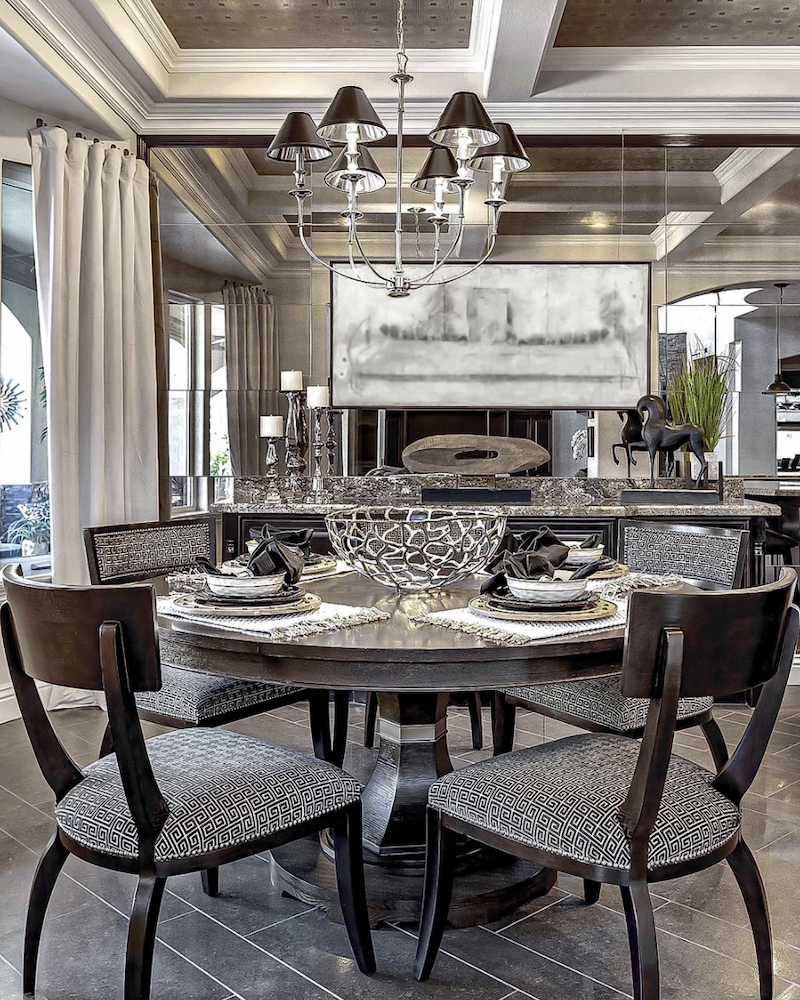
You mentioned that you have a really detailed LOA. How did you build that over time?
Oh, gosh, it’s so long—I tell them to allow time to read it. I started with a template made for the state of Nevada from a colleague that worked on it with an attorney, which she was gracious enough to share with me. Also, on a private Facebook group for interior designers, there was an open forum where designers would post their contracts for all of us to see—to share ideas and see what we’re missing.
I’ve learned from my own mistakes, and also from [mistakes others have made] through some of these designer groups. Combining so much experience has helped me build a better letter of agreement—one that is rich in details and educational to the client. It is more about educating the client than anything. I mean, I hear some designers have a one-page contract. I don’t know how you could [cover] so much responsibility and education in one page!
What role does the Las Vegas Design Center have for your firm?
The design center is an interesting beast, because other than when the market happens twice a year, these three huge buildings are closed except for two main floors in two buildings. They have a few big guys like Vanguard and Global Views. When I have taken clients there, they were overwhelmed, so I try to steer away from that—I keep the design center for my eyes only.
We have amazing showrooms for fabric and wallpaper—for example, I love Élan Collections, which carries luxury brands, but we don’t have anything like a Century Furniture. I wish that our design center was more like High Point. Vegas is interesting because we’ve been growing a ton, but for anyone that wants to open high-end design stores in Vegas—please do, because we’re lacking that.
Where do you source to get inspired?
I’ll go to Los Angeles, of course, since we’re neighbors. Vegas is going into a very contemporary era because of all of the modern luxury homes that are coming in now. And those are very focused on futuristic, modern-contemporary furniture, which is the Italian and German brands, and L.A. has a ton of that.

When you think about the firm, what is your biggest challenge right now?
The ability to say no. I am trying to get fewer projects that are better aligned with my company values. We’re trying to finish up a few smaller projects that we took before, and then to really stay on-brand with the aesthetics of the houses we choose to work on next. Sometimes, I have designed houses that I could never photograph because they did not [reflect] my brand, so I’m working toward always putting my brand filter on my upcoming projects.
When you talk about the company’s values, what does that mean to you?
We stand for excellent design and excellent service. We are not cookie cutters; we don’t copy designs or follow trends, and we truly tailor to the client’s lifestyle and aesthetic. As a Pisces, I’m very spiritual and I connect very deeply with my client in a way that they’re like, “Oh, my gosh, I didn’t know I had that in me.” I bring these cool vibes out of them through the design process, and it is so rewarding.
To learn more about Fabiola Avelino, visit her website or find her on Instagram.
















